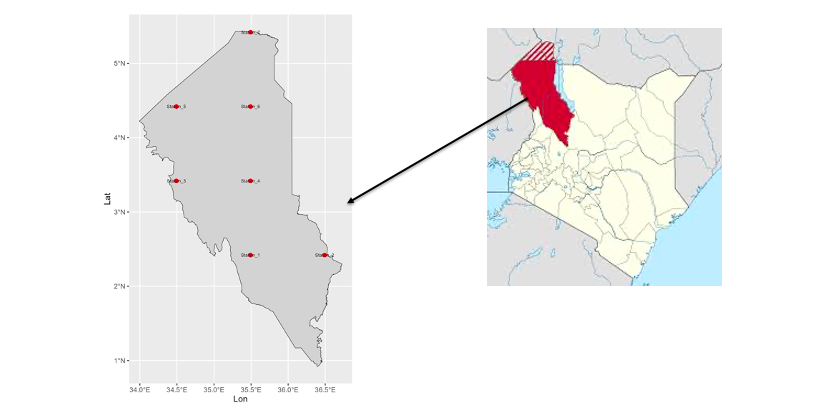Evaluation of climate prediction models to support decision-making in Sub-Saharan Africa

A team of ALBATROSS researchers at the University of Nairobi conducted an assessment of the performance of different climate prediction models across Africa. The models considered are sub-seasonal to decadal, and they have evaluated their applicability in Sub-Saharan Africa, identifying their potential and limitations in supporting climate-focused decision-making.
Accurate, reliable and usable climate information is vital to supporting adaptation, planning, risk management, and policy development, especially in regions with high dependence on rain-fed agriculture and natural resources like Sub-Saharan Africa, which are suffering the adverse effects of climate change and variability.
By combining literature review, model evaluation, and insights from a case study (the Turkana Hub, in Kenya, see the locations showing 7 stations used in the study in the figure above), the objective of this work has been to enhance the understanding, relevance and usability of climate forecasts in support of climate services and nature-based solutions across the region. It also informs policymakers on the economic value of forecasts and their relevance towards averting economic losses.
Findings from the study indicate that even though seasonal forecasts have great potential in regions like East and Southern Africa, significant challenges persist, such as scarcity of data, systematic model biases (overestimations and underestimations of rainfall and temperature extremes depending on the region analysed), coarse spatial resolution, and inconsistencies among observational datasets. Nonetheless, the study stresses the benefit of improving access to model evaluation tools and enhancing regional forecasting capabilities that have been developed by the ALBATROSS partner FMI.
To improve the usability of forecasts, recommendations include refinement of climate models, upscaling high-resolution modelling, integrating machine learning for bias correction, and strengthening science-policy engagement to improve climate services. Addressing these challenges is critical to transforming climate predictions into actionable tools for resilience in vulnerable African regions.
Share on Facebook Share on Twitter Share on Pinterest